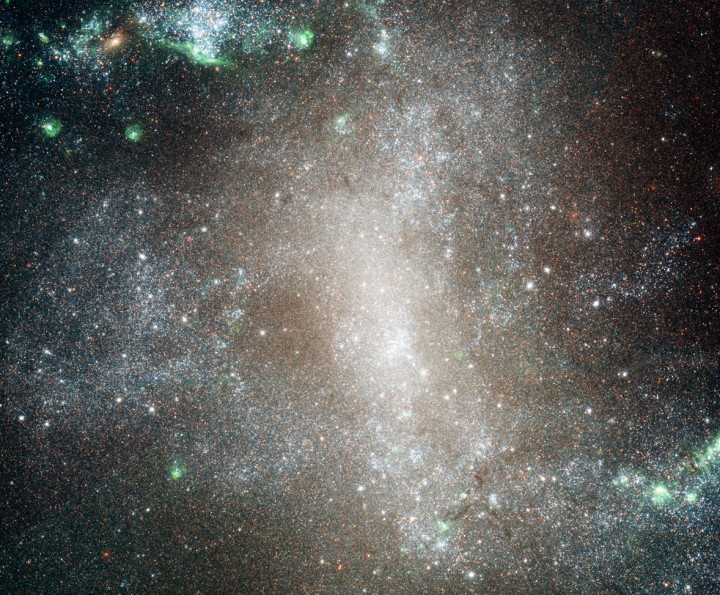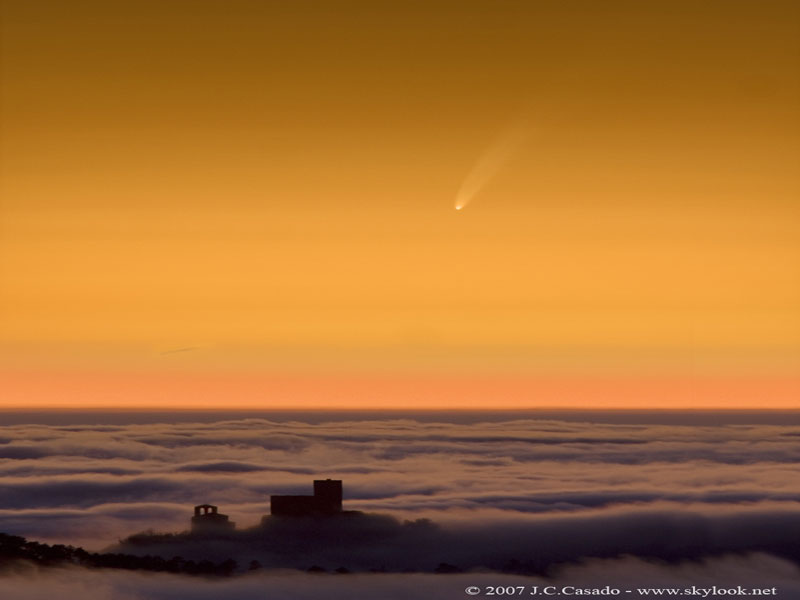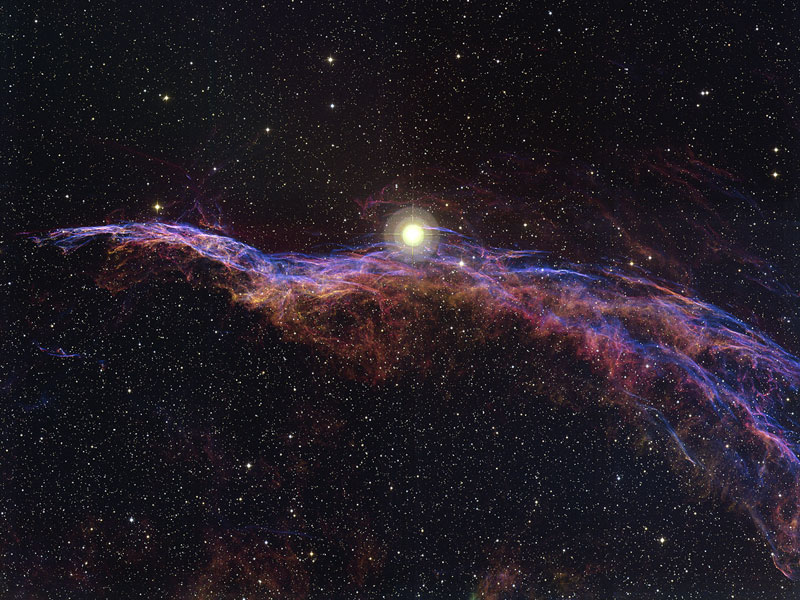 The Star Clusters of NGC 1313 (3.04)This is a picture of the spiral galaxy NGC 1313 taken from the Hubble. The Space Telescope's Advanced Camera for Surveys was used to capture this composite image. The Hubble can reveal pictures of objects as far away as 14 million light-years, but this is only 10,000. This picture allows astronomers to form hypotheses about the formation and death of star clusters in the Milky Way.
The Star Clusters of NGC 1313 (3.04)This is a picture of the spiral galaxy NGC 1313 taken from the Hubble. The Space Telescope's Advanced Camera for Surveys was used to capture this composite image. The Hubble can reveal pictures of objects as far away as 14 million light-years, but this is only 10,000. This picture allows astronomers to form hypotheses about the formation and death of star clusters in the Milky Way.
 Comet McNaught Over Catalonia (3.03)Comet McNaught was brighter than Venus when seen recently, making it a -5 magnitude. This comet was considered the Great Comet of 2007 and rounded the orbit of Mercury. As it travels south, it will lose some of its brightness. it can be seen through the rest of January. This was taken on Friday in the mountains above Catalonia, Spain.
Comet McNaught Over Catalonia (3.03)Comet McNaught was brighter than Venus when seen recently, making it a -5 magnitude. This comet was considered the Great Comet of 2007 and rounded the orbit of Mercury. As it travels south, it will lose some of its brightness. it can be seen through the rest of January. This was taken on Friday in the mountains above Catalonia, Spain.
 McNaught Now Brightest Comet in Decades (3.02)The McNaught Comet has been the most visibly bright comet to been seen in the dusky sky since decades. The comet, also called C/2006 P1, could have been observed closer towards the sun @ dawn & dusk (like the Smashing Pumpkins CD, which is superb. It also reminds me of... "DUSK AND SUMMER"-Huzzah!) This picture was taken in Bad Mergentheim, Germany, on January 7th. On another note, this freak who wears the same kind of hoodie everyday didn't know what a swastika was. I think I might have vomited in my mouth.
McNaught Now Brightest Comet in Decades (3.02)The McNaught Comet has been the most visibly bright comet to been seen in the dusky sky since decades. The comet, also called C/2006 P1, could have been observed closer towards the sun @ dawn & dusk (like the Smashing Pumpkins CD, which is superb. It also reminds me of... "DUSK AND SUMMER"-Huzzah!) This picture was taken in Bad Mergentheim, Germany, on January 7th. On another note, this freak who wears the same kind of hoodie everyday didn't know what a swastika was. I think I might have vomited in my mouth.
 NGC 6960: The Witch's Broom Nebula (3.01)This is the Veil Nebula, a star that exploded millions of years ago. This is the west side, known as NGC 6960, or the Withh's Broom Nebula. The colours come from nearby excited gas. This supernova remanent exists 1400 light-years away from Cygnus. This is larger than 3x the size of the moon, angularly speaking.
NGC 6960: The Witch's Broom Nebula (3.01)This is the Veil Nebula, a star that exploded millions of years ago. This is the west side, known as NGC 6960, or the Withh's Broom Nebula. The colours come from nearby excited gas. This supernova remanent exists 1400 light-years away from Cygnus. This is larger than 3x the size of the moon, angularly speaking.



